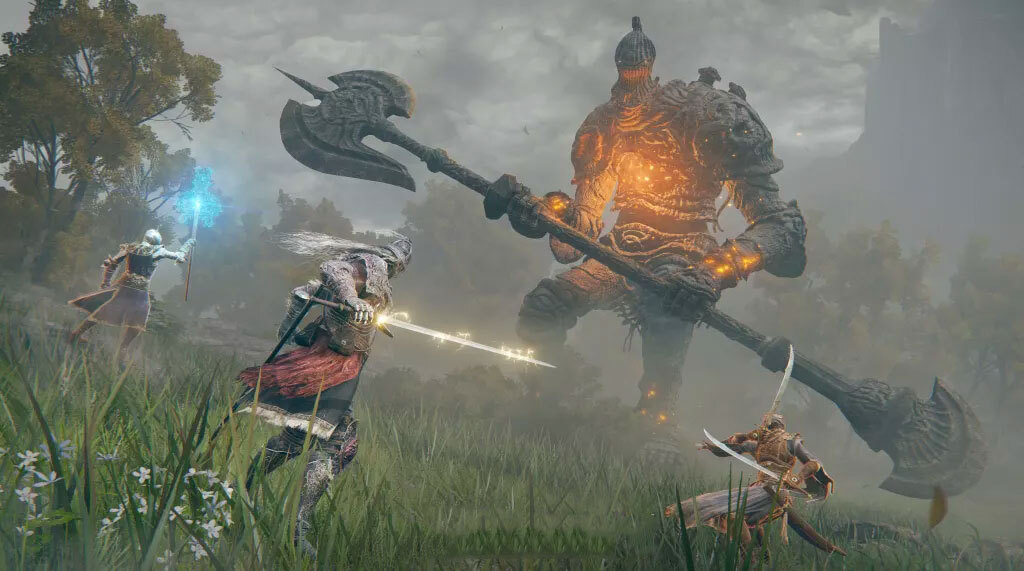Elden Ring’s open world provides hours of fun — and frustration
Elden Ring’s most distinctive feature is arguably one of its weak points

Elden Ring is finally here, and it’s sure to satisfy FromSoftware fans who have been craving a new challenge. I’ve been playing Elden Ring for about a week-and-a-half, and in that time, I’ve traversed open plains, mounted a horse to chase down dragons, bested mad sorcerers, and built up my character from a naked nobody into a powerful warrior. I’ve also died again, and again, and again to everything from many-armed demigods, to well-hidden traps, to simply falling from high ledges. And, for the most part, I’ve loved the whole experience.
I say “for the most part,” because while I explored the Lands Between, I couldn’t quite shake the feeling that I was spending a lot of time chasing dead ends. Elden Ring offers players a huge world with plenty of hidden secrets to find, and it doesn’t offer you much guidance for finding them. This makes the game feel much more adventurous and rewarding than the average open-world title. But it also means that you’ll spend a lot of time riding around, not finding a whole lot, and wondering whether you’re still going in the right direction. (For example, I have some tips on where to go next once you've defeated Queen Rennala if you're uncertain about what to do.)
Secrets of Limgrave

The game’s first major area, Limgrave, is perhaps its most directed. After you stumble out of the tutorial dungeon, the whole world opens up, and you can go pretty much anywhere you want. This isn’t as daunting as it sounds, though, because a few helpful non-player characters hint that you should make your way to Stormveil Castle. There, you encounter an unavoidable boss called Margit the Fell Omen.
In a separate article, I covered how the Margit boss fight is essentially a microcosm of Elden Ring as a whole. If you make a beeline for Stormveil, you probably won’t be able to defeat Margit. On the other hand, if you explore Limgrave thoroughly, seeking out optional dungeons, bosses, equipment and upgrades, Margit becomes much less daunting, as does the game’s first major dungeon.
What I didn’t mention in the previous piece, though, is that finding this optional content is not all that simple. Left to my own devices, I discovered only two optional dungeons out of about a dozen. I couldn’t find the merchant that sold the requisite early-game weapons, or collect enough Smithing Stones to upgrade my sword, or fight enemies that dropped enough Runes to help me level up consistently.
This means that I spent a good three or four of my early hours in Elden Ring riding around aimlessly, hoping that I would stumble on the next optional objective. There are a few hints, if you look hard enough — semi-hidden paths, buyable notes that give rough locations for bosses, NPCs who send you on minor quests and so forth.
But not every optional area has a prompt, and some of them are incredibly out of the way. Others require you to defeat enemies that are way beyond your power level — or seem to be at first glance. In fact, it’s often quite difficult to tell whether an optional area is challenging-but-doable, or nearly impossible without upgrading your stats and equipment.
In other words, yes: Elden Ring is remarkable in how much interesting side content it offers, and how it lets you discover almost all of it on your own. But the flip side is that a lot of it will waste your time, kill you outright or be nearly impossible to discover without a walkthrough.
Beyond Limgrave

While Limgrave itself is huge, it’s at least relatively constrained. Until you beat Margit, it’s difficult (although not impossible) to leave and advance to other areas of the game. After Stormveil Castle, however, all bets are off. The northern land of Liurnia branches off into a variety of different areas. While you do get a few hints about where to go next, the area itself is distant and difficult to reach, and you may well get lost and find yourself somewhere totally different along the way.
On the one hand, it seems petty to criticize the game for this, since it’s a feature, not a bug. Elden Ring is not just about blasting your way through the critical path to see how quickly you can reach the final boss. It’s also about taking your time, getting lost and discovering incredible things along the way.
When the game is firing on all cylinders, it is, indeed, a magical experience. When I went off the beaten path, I mounted my horse and pursued a dragon across an open field; I delved into a poisonous swamp and recovered a distinctive set of armor; I climbed to the top of a mountain and fought a deadly boss, who rewarded me with plenty of Runes. But I also double-jumped my way to an impossible slope and fell to my death; I followed a coastal path all the way to a barren dead end; I wound up in a dungeon way above my level, where I lost all my Runes and had to fight my way back out. You never know what you’re going to find in Elden Ring, and it’s something bad as often as something good.
To the game’s credit, I never got absolutely stuck. When I went the wrong way, it was easy enough to teleport back to an earlier Site of Lost Grace and strike out in a different direction. But I lost a ton of time and Runes along the way. This haphazard “try it and see” approach feels at-odds with more linear Souls games. In other From titles, exploration is the only way forward, and death is a constant threat, sure. But there’s also a sense that you’re always making progress, even if only infinitesimally. In Elden Ring, it is not only possible, but probable, that you’ll sometimes have nothing to show for your efforts.
None of these criticisms should take away from the fact that Elden Ring is an excellent game, and a guaranteed good time for veteran Souls fans. Still, there was something beautiful about the large-but-linear levels in From’s previous games. Elden Ring delivers dozens of hours of fun, but be prepared for at least a few hours of frustration, too.
Sign up to get the BEST of Tom's Guide direct to your inbox.
Get instant access to breaking news, the hottest reviews, great deals and helpful tips.
Marshall Honorof is a senior editor for Tom's Guide, overseeing the site's coverage of gaming hardware and software. He comes from a science writing background, having studied paleomammalogy, biological anthropology, and the history of science and technology. After hours, you can find him practicing taekwondo or doing deep dives on classic sci-fi.

